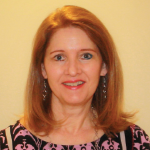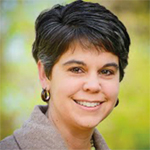
ESB Professional/shutterstock.com
Questions that come to mind when you are specialized within a subspecialty: How can I build a network of peers? Where can I find resources and tools that apply to me? Do organizations exist that can provide me with opportunities for growth and leadership?
As a pediatric nurse practitioner in rheumatology at Nationwide Children’s Hospital in Columbus, Ohio, Karla Jones knew early in her career she was going to need help to build her professional network, advance her career and provide the best care for her patients. To find this, Ms. Jones turned to the ARHP.
Finding a Go-to Resource
Because pediatrics is a relatively small subset within rheumatology, building a network of professional peers was critical for Ms. Jones’ career development. “It is very important to have a network of pediatric colleagues to reach out to with clinical questions, for advice, to work with on projects, and to address issues specific to pediatric patients,” she says.
In the late 1980s, Ms. Jones began to build her network when she started attending ACR/ARHP Annual Meetings and subsequently joined the association.
“When I started in pediatric rheumatology, we were barely using computers and certainly did not have the Internet,” she recalls. “In-person meetings, books and journals were the only source of information available at the time. I turned to what was then known as the Arthritis Health Professions Association [which later became the Association of Rheumatology Health Professionals (ARHP)] for information and resources. Since that time, I have continued to utilize the ARHP as my go-to resource.”
‘One of the biggest advantages in being a member of ARHP is the opportunity to interact with health professionals in multiple disciplines & with rheumatologists.’ —Ms. Jones
ARHP Opens Doors
Although meetings and publications remain an important source of education for Ms. Jones, she notes that engaging in the association met her specific need of building a diverse, active network.
“One of the biggest advantages in being a member of ARHP is the opportunity to interact with health professionals in multiple disciplines and with rheumatologists,” she says. “The more your name gets out there, the more people look to you to become involved in committee work, research and other projects. ARHP opens doors.”

Ms. Jones
As Ms. Jones met more ARHP and ACR members, more doors opened. Being asked to serve as an ARHP representative to an ACR committee gave her insight into the common challenges facing both adult and pediatric rheumatology healthcare professionals and rheumatologists. Ms. Jones continued to serve on ARHP committees and gained a broader perspective of the organization and the issues that affect rheumatology as a whole. “Volunteering for ARHP has given me the opportunity to see things from all sides—practice, academics, research and advocacy,” she says.
A Direct Impact
Exposure to other members of the rheumatology care team has directly affected Ms. Jones’ patient care. “Rheumatologic diseases are complex, and many disciplines are involved in the patients’ care. Being a member of ARHP affords me the opportunity to meet and interact with the other health professionals. This knowledge helps me provide better care to my patients and may ultimately lead to better outcomes for them.”


